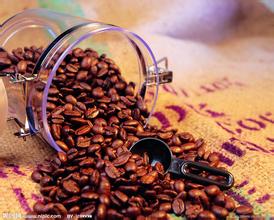Coffee Culture in Ethiopia Coffee Origin
Various forms of coffee cultivation can be found in Ethiopia: everything from wild coffee forests and semi-developed land to traditionally operated plots to modern plantations. About 50% of the coffee is grown more than 1500 meters above sea level.
Harrar coffee is the highest growing area of all coffee in Ethiopia. Hara coffee can be divided into long coffee beans and short coffee beans, of which long coffee beans are the most popular. It has a soft taste, with wild flavor of wine, and slightly sour taste, unforgettable after drinking. Djimmah Coffee is wild at an altitude of more than 1200 meters and is sold under two brands: Limu Coffee and Babeka Coffee. Other coffee names include Sidamo coffee from central China, which is sold under the brand name Yirgachaffe, and coffee from Lekempti, which has a unique flavor. Jima and Cedamo beans have an unpleasant appearance but a good taste.
One of the rarest Ethiopian coffee beans on the market is Ilgachafi, which is exported to Japan and Europe but is rarely seen in the United States. This is because Dallmeyer, the German coffee roaster owned by Nestl é, has established close ties with the growers of Ilgachafi coffee, thus obtaining the largest single supply of the coffee beans.
The flavor of Ethiopian coffee is difficult to describe. It is neither strong nor sour. Therefore, it is not suitable for deep baking, otherwise it will easily lose its characteristics.
In terms of characteristics, Ethiopian coffee is somewhat similar to the famous mocha coffee. Of course, high-quality Ethiopian coffee can be compared with the best coffee from all over the world, including its considerable price.
Ethiopia has the highest domestic consumption of coffee in Africa. In the countryside, it is often drunk with a vanilla called "Adam's Health" (Health of Adam): the new coffee beans are roasted and mashed with vanilla, then the mixture is mixed and drunk in a small teacup, which is often served with pancakes to extract the sweet pepper flavor from the pancakes.

Important Notice :
前街咖啡 FrontStreet Coffee has moved to new addredd:
FrontStreet Coffee Address: 315,Donghua East Road,GuangZhou
Tel:020 38364473
- Prev

Fine coffee Colombian coffee species morphology
The main varieties of Colombian coffee are small grains of coffee. Plants are small trees or large shrubs, 5-8 m tall, usually much branched at base; old branches gray-white, nodes dilated, young branches glabrous, compressed. Leaves thinly leathery, ovate-lanceolate or lanceolate, 6-14 cm long and 3.5-5 cm wide, tip long acuminate, acuminate part 10-15 mm long, base cuneate or slightly obtuse, rarely rounded, entire or
- Next

Kenyan coffee beans are coffee beans from Kenya.
Coffee fruit is composed of two oval seeds facing each other. One side of the joint is a flat joint, called a flat bean. But there is also a round seed, called round beans, which taste no different. Ripe and red coffee cherries have multiple structures. In the middle is the precursor of coffee beans, light green seeds. Generally speaking, coffee fruit is composed of two oval
Related
- Does Rose Summer choose Blue, Green or Red? Detailed explanation of Rose Summer Coffee plots and Classification in Panamanian Jade Manor
- What is the difference between the origin, producing area, processing plant, cooperative and manor of coffee beans?
- How fine does the espresso powder fit? how to grind the espresso?
- Sca coffee roasting degree color card coffee roasting degree 8 roasting color values what do you mean?
- The practice of lattes: how to make lattes at home
- Introduction to Indonesian Fine Coffee beans-- Java Coffee producing area of Indonesian Arabica Coffee
- How much will the flavor of light and medium roasted rose summer be expressed? What baking level is rose summer suitable for?
- Introduction to the characteristics of washing, sun-drying or wet-planing coffee commonly used in Mantenin, Indonesia
- Price characteristics of Arabica Coffee Bean Starbucks introduction to Manning Coffee Bean Taste producing area Variety Manor
- What is the authentic Yega flavor? What are the flavor characteristics of the really excellent Yejasuffi coffee beans?

